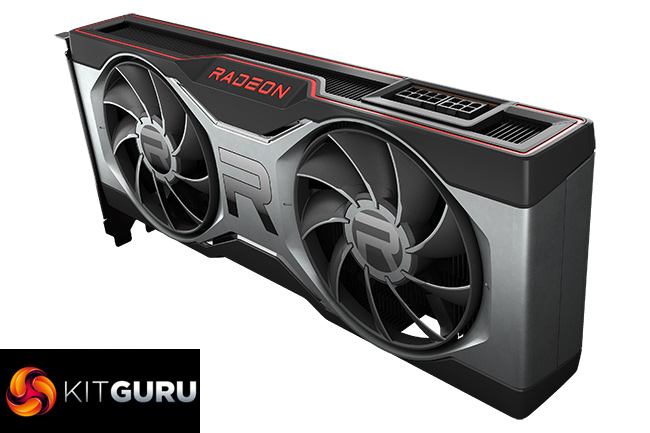We've been hearing about it since the launch of the RX 6800 series back in November but AMD's RX 6700 XT has now arrived, and it's targeting 1440p gamers while the MSRP hits £419.99/$479. It's certainly not cheap, but it brings RDNA 2 down to the mid-range for the first time.
The RX 6700 XT is aimed squarely at gamers who want to use a 1440p monitor without compromising any image quality settings. In that regard, the card is certainly succesful, averaging over 60FPS in all but one of the twelve games we tested when using Ultra settings at 1440p. As it happens, the one game where we couldn't quite manage 60FPS was Cyberpunk 2077, which is as demanding as it gets right now.
Relative to its competition, I was pretty hopeful that the RX 6700 XT would indeed match, or even beat, Nvidia's RTX 3070 based on the initial performance numbers shown by AMD. Across the twelve games we tested though, the 6700 XT is only faster in one of those, and by a 4% margin. There's a few other close calls, but on average the 6700 XT is 10% slower at 1440p. Against the RTX 3060 Ti, it's 2% faster on average, while it delivers a generation uplift of 26% when compared to its direct predecessor, the RX 5700 XT.
I also found the performance margins when compared against the RX 6800 to be fascinating. Generally we'd expect pretty consistent scaling when comparing two GPUs of the same architecture – the RX 5700 XT, for instance, is always between 12-15% faster than the RX 5700 in the twelve games we've tested. Comparing the 6700 XT to the RX 6800 sees the margins vary quite significantly, as it's anywhere from 9-23% slower at 1440p. I would suggest this is due to the 6700 XT having a third fewer cores than the 6800, but significantly higher clocks, meaning the margins of difference can vary depending on whether a certain game is more clock sensitive, or if it favours an increased core count.
Rasterisation performance aside, the RX 6700 XT's ray tracing numbers are disappointing. It manages playable frame rates at 1080p when ray tracing is enabled, but it is soundly beaten by the RTX 3060 Ti, and it's not even close. In Control and Watch Dogs: Legion, ray tracing performance is actually closer to the RTX 2060 Super than it is to the RTX 3060 Ti, and that's without factoring in DLSS, which boosts Nvidia's advantage even further. I am still of the opinion that ray tracing performance alone isn't a big enough selling point yet to solely determine your buying decision, but it certainly doesn't help AMD when its £420 GPU is comprehensively outperformed by Nvidia's £369 RTX 3060 Ti in ray traced workloads.
In terms of AMD's reference cooler, it is an impressive piece of work. Despite being about half a kilogram lighter than the RX 6800, thermals are kept in check, hitting a peak of 77C based on our testing. The two fans also stay quiet, producing 38dBa, which is right in line with AMD's other reference cards of this generation. Noise-normalised thermals didn't show a big improvement compared to out of the box behaviour, but we will see how AMD's partners can improve on the reference design in the coming weeks.
Overall efficiency of this GPU isn't as good as we have come to expect from RDNA 2. Drawing 222W on average across our testing, performance per Watt is 15% lower than the RX 6800 at 1440p, and also lags behind Nvidia's RTX 3060 Ti and RTX 3070 by 11%. Compared to the first generation RDNA architecture, we're still looking at an increase in performance per Watt of 22% compared to the RX 5700 XT, but the 6700 XT is a slight backwards step compared to the RX 6800.
Cost per frame also paints an interesting picture. This is based on launch MSRPs, and while ‘MSRP' means very little these days, it does tell us how AMD is trying to position the product. At 1440p, cost per frame is effectively dead-level with the RTX 3070, but comes in 11% more expensive per frame when compared to the RTX 3060 Ti. Even more interesting is the fact that when using the $479 USD MSRP, overall value is worse than here in the UK when using the £419.99 MSRP. Based on dollar pricing, the 6700 XT is actually 7% more expensive per frame than the RTX 3070, and that increases to 17% versus the RTX 3060 Ti.
In my opinion, the RX 6700 XT really needed to deliver better value against the RTX 3060 Ti when looking at rasterisation performance, simply to counteract ray tracing and DLSS performance, which currently gives Nvidia GPUs an edge against anything from Team Red. It doesn't make sense for the RX 6700 XT to deliver worse value than the RTX 3060 Ti, while also not being able to match it in those other areas.
Ultimately, for whatever reason, AMD has set the price too high for this GPU. It's £50 more expensive than the RTX 3060 Ti and £40 more than what the RX 5700 XT launched for. I think it would definitely be an option to consider if pricing dropped, as it is still a fast GPU capable of solid frame rates for 1440p gaming. As things stand, the RTX 3060 Ti can deliver 98% of the 1440p performance, but for 88% of the price, while also offering far superior ray tracing performance as well as DLSS support.
We don't yet have a buy link for the RX 6700 XT specifically, but we expect some availability on AMD.com tomorrow, March 18th.
Discuss on our Facebook page HERE.
Pros
- Solid performer for 1440p gaming.
- Cool and quiet reference card.
- We saw up to a 6% FPS boost when using Smart Access Memory.
Cons
- Ray tracing performance is significantly slower than the competition.
- Cost per frame is 11% higher than RTX 3060 Ti, with worse ray tracing performance and no DLSS.
- Not as efficient as RX 6800.
KitGuru says: The RX 6700 XT performs well in rasterised games, but the price needs to be adjusted to make it competitive. Currently the RTX 3060 Ti is cheaper per frame, while also offering significantly better ray tracing performance alongside DLSS, which AMD still has no answer to.
 KitGuru KitGuru.net – Tech News | Hardware News | Hardware Reviews | IOS | Mobile | Gaming | Graphics Cards
KitGuru KitGuru.net – Tech News | Hardware News | Hardware Reviews | IOS | Mobile | Gaming | Graphics Cards




